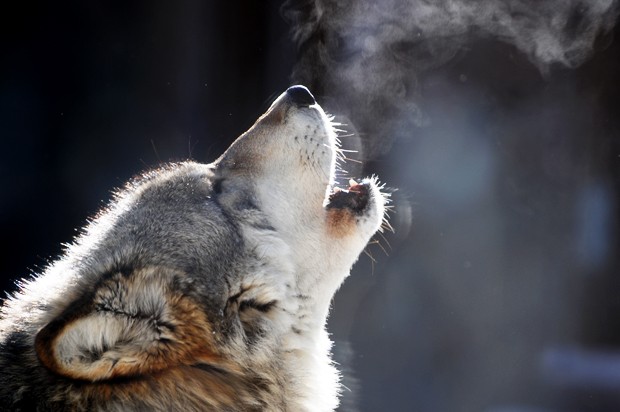Just as human hunters lose their edge as they age, a recent study found wolvesâÄô strength and agility to be much more impacted by the effects of aging than previously thought. Using more than a decade of observations on wolves in Yellowstone National Park , a study found wolves are at their peak predatory performance for only 25 percent of their adult lives, not 100 percent as previously thought. âÄúThe bottom line is that hunting is a physically demanding activity, particularly if youâÄôre a wild carnivore,âÄù said Dan MacNulty , a University of Minnesota postdoctoral researcher of ecology, evolution and behavio r, and leader of the study. âÄúIt only looks easy because we see it on the Discovery Channel every night.âÄù Most wolves in Yellowstone live to be six years old, and their ability to kill peaks at ages two to three, according to the study. The findings, coming at a time when wolves are being blamed for YellowstoneâÄôs decreasing elk population, suggest that wolvesâÄô impact on their prey populations, such as elk and deer, is more limited than previously thought, MacNulty said. The next step will be to evaluate the magnitude of that impact, he said. Until now, biologists held the long-standing belief that wolves went through two stages of life âÄî a stage of development followed by a plateau period, MacNulty said. The study presents the novel idea of there being three stages: development, plateau and then decline. Doug Smith, Yellowstone Wolf Project leader at the Yellowstone Center for Resources , supervised the study. He said the results shocked him because heâÄôd always thought wolves remained at their peak hunting ability for a few years, rather than the small peak the graphs from this study showed. âÄúThrough mythology and fables, we want wolves to be a certain way and that is supremely good at killing,âÄù he said. âÄúIt turns out theyâÄôre subject to the same problems weâÄôre subject to. You get old quick.âÄù Despite the results of the study, itâÄôs important to note that wolves are still good hunters for 100 percent of their lives, said David Mech, a senior research scientist at the U.S. Geological Survey and University professor. âÄúIâÄôve seen old wolves hunt very well,âÄù he said. âÄúItâÄôs not a case where once they reach five, they canâÄôt hunt anymore.âÄù Livestock holders around Yellowstone have advocated shooting wolves to control their population. If hunters shoot the best trophy wolves, however, they may not be shooting the best hunters, which could have adverse effects, Craig Packer, ecology, evolution and behavior professor said. If the younger wolf population thrives, it would pose an even bigger threat to livestock, he said. Packer, who supervised the study, said the idea the study presents regarding the age at which wolves reach their athletic peak matches that of humans. Humans, whose average life span is between 70 and 80 years, reach their peak physical ability between 20 and 30 years of age, Smith said. âÄúThis actually makes real biological sense âĦâÄù he said. In the wild, the study wouldnâÄôt have been possible, Smith said, but since Yellowstone offers scientists the ability to watch wolves hunt repeatedly over long periods of time, the circumstances are better for acquiring quantitative data. The study âÄúPredatory senescence in aging wolvesâÄù appeared online in Ecology Letters and will be published in the journalâÄôs December issue. For about 60 years, scientists have focused on prey becoming more vulnerable with age, MacNulty said. With his research, he said he hopes to challenge the universal assumption that predators are âÄúageless.âÄù âÄúThe idea of aging has only been applied to one side of the predator/prey equation until now,âÄù he said. âÄúThat, frankly, is quite an oversight.âÄù

Image by Stephen Maturen
A study led by a researcher at the University of Minnesota has found that wolves are at their peak predatory performance for only 25 percent of their adult lives, not 100 percent as previously thought.
Study finds that wolves aren’t successful predators for entire lives
The finding has implications for predator and prey relationships.
by Tara Bannow
Published October 26, 2009
0

